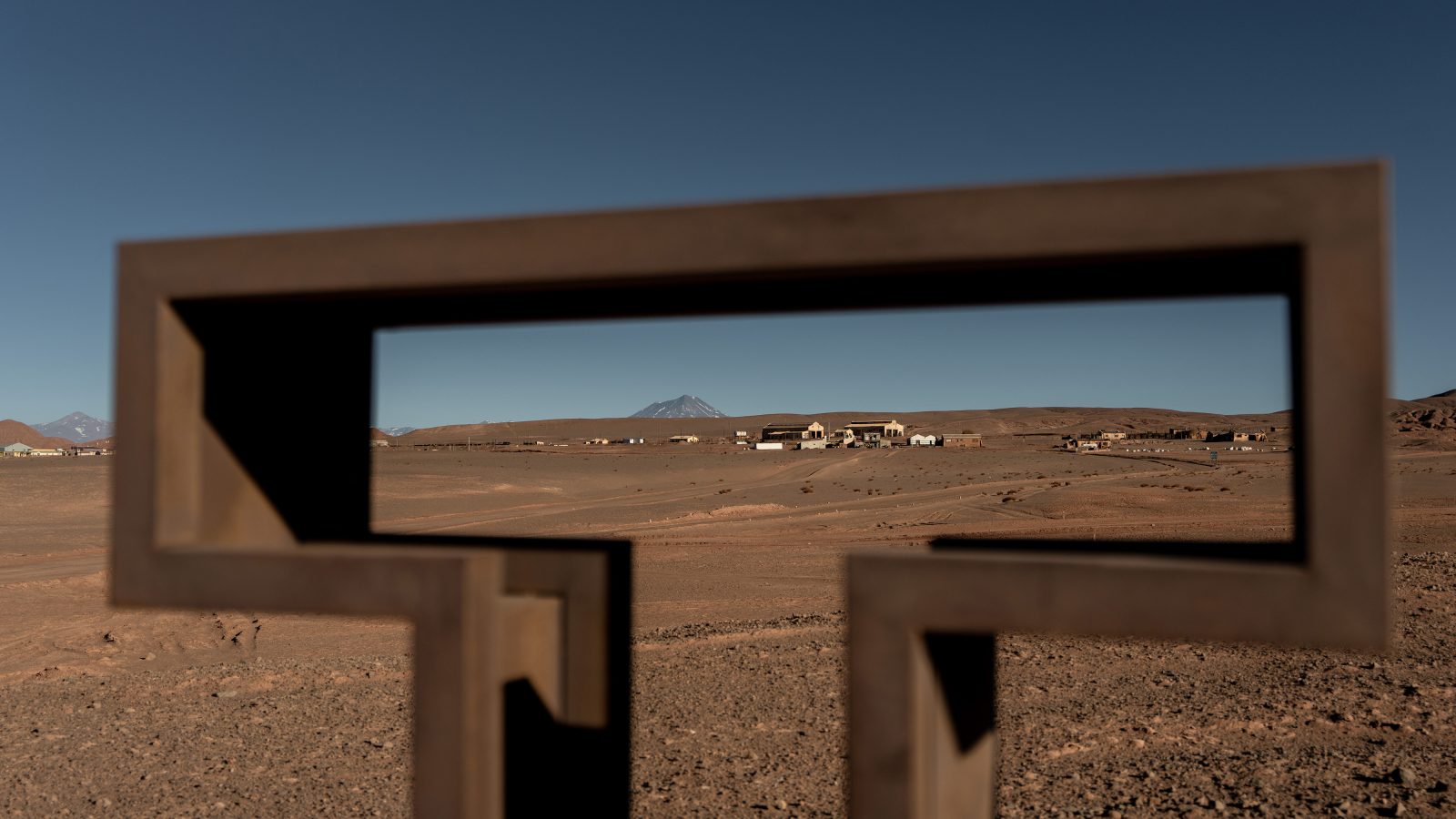Tolar Grande, a windswept settlement perched at 11,500 feet above sea level in northern Argentina, once received little more than a trickle of visitors. Then, in the late 2010s, hostels in the lithium-rich town began filling up with workers at mining companies, while the handful of small eateries shifted from serving the occasional tourist to feeding miners.
“Mining absorbed almost everyone,” Marta Ríos, who runs the civil registry in Tolar Grande, home to around 300 people, told Rest of World. “At first it was strange to see trucks all the time, buses full of workers — suddenly, there was no unemployment.”
As demand for electric vehicles soared, the so-called lithium triangle — spanning northern Argentina, Chile, and southern Bolivia — became the beating heart of the energy transition. Home to nearly half the world’s known lithium resources, the region drew a flood of foreign investors eager to secure “white gold,” as well as workers from across the country keen to cash in on the boom. The output of some of these mines ultimately ends up in batteries for Toyota, Hyundai, and Ford.
But after peaking in late 2022, lithium prices have fallen sharply as supply outpaced demand with a weakening Chinese economy and slower EV sales growth. Large operators scaled back investment and cut staff, leaving locals who had redirected their businesses to serve the industry scrambling to find new clients or new work altogether.
“In many of these remote towns, there’s no alternative economy,” Martín Fellner, a lawmaker in Jujuy, one of Argentina’s largest lithium-exporting provinces, told Rest of World. “Communities themselves [are] asking for more mining projects because without them, there are no formal jobs, no decent salaries.”
At first, the lithium boom led to the creation or expansion of local catering companies, water suppliers, and even small security outfits in these towns, according to Ríos. Along desert highways, buses with signs that read “at the service of mining” became a common sight, part of the ecosystem that developed around the industry.
-
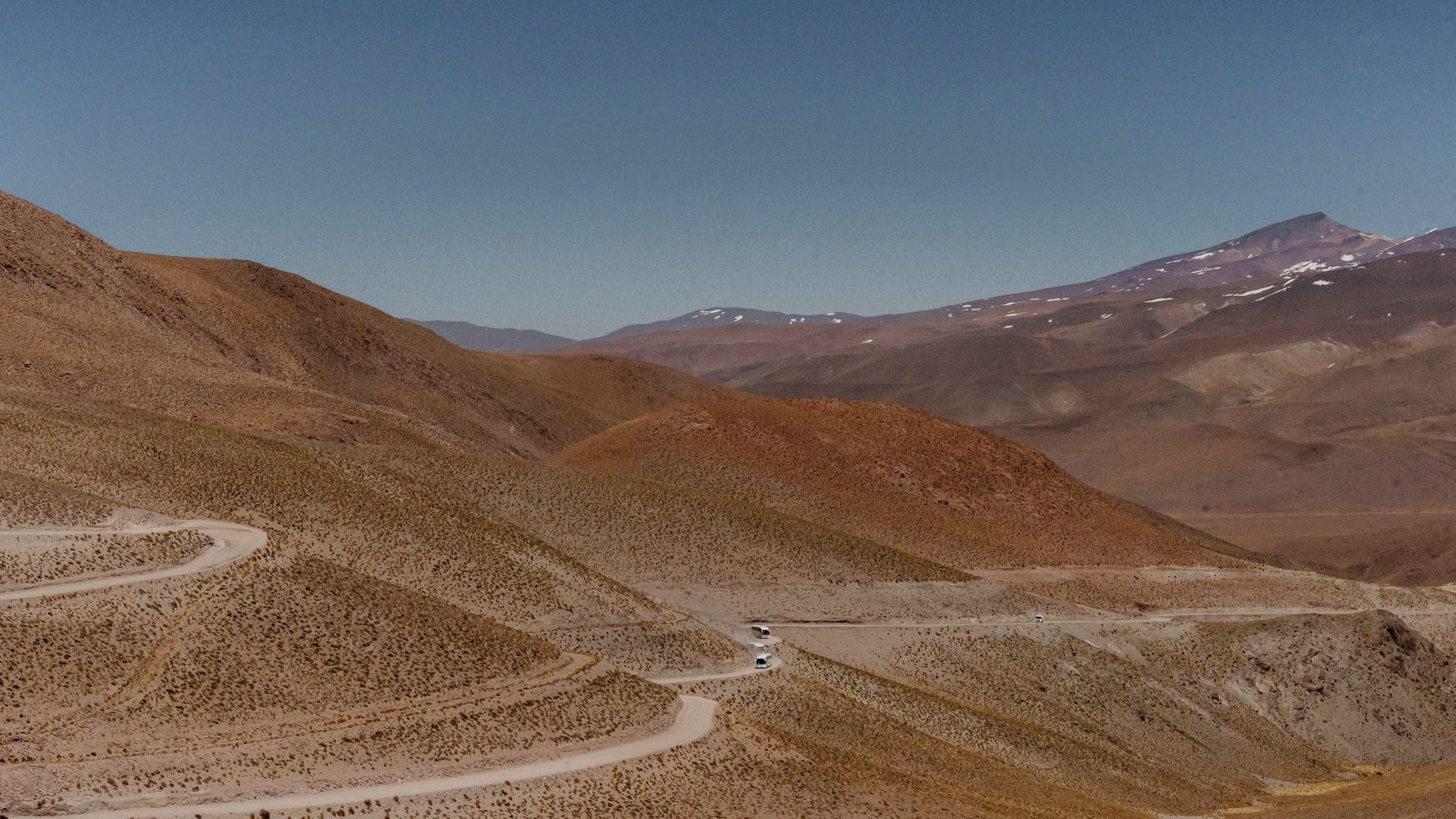
Trucks on the road to San Antonio de los Cobres, in the lithium-rich Salta Province in Argentina.
-
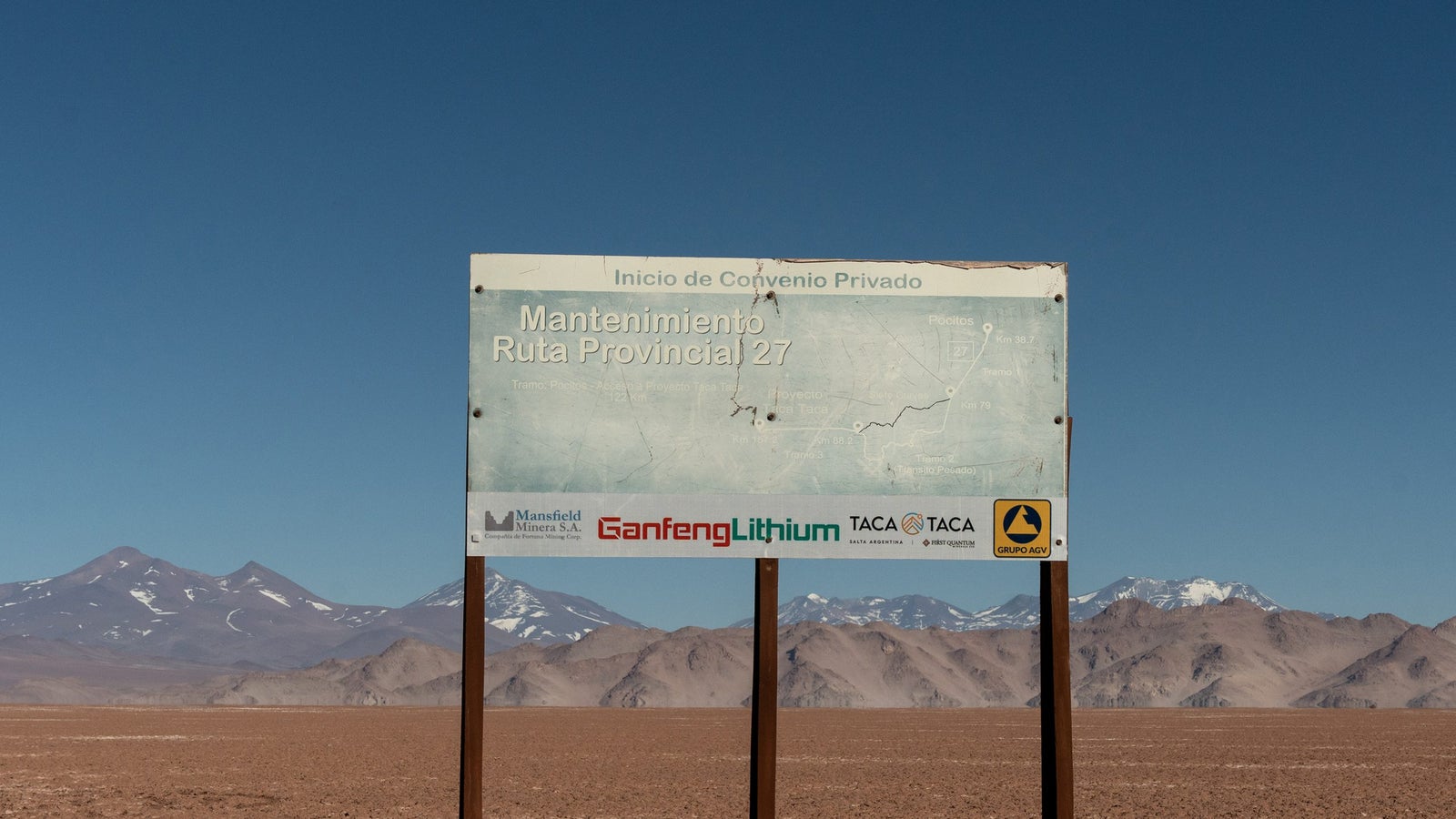
A billboard at Tolar Grande showing the agreement with mining companies for the maintenance of a highway.
Anita Pouchard Serra for Rest of World
The price of lithium has plummeted roughly 80% from its 2022 peak, with prices currently hovering at around $10,000 per ton. The impact on mining operations worldwide has been swift: In Australia, the world’s top producer, companies have cut jobs and shelved projects. In the U.S., large lithium ventures have been delayed or cancelled as investors weigh the risks.
Across South America’s lithium triangle, several flagship mines are running below capacity, with new investments delayed or pared down. For remote mining towns, the downturn has meant layoffs, shuttered camps, and fewer customers at shops — especially among smaller providers.
“Lithium companies today don’t have the means to finance expansions or grow their mines,” Eduardo Gigante, a professor of lithium production at Austral University in Buenos Aires, told Rest of World. But if and when lithium demand rises again, Argentina will struggle to ensure supply if its current capacity remains static, or worsens, he said.
In recent months, companies in the lithium triangle have tightened their belt — scaling back staff and freezing local contracts. “If companies don’t have efficient cost management, they’ll go under,” Gigante said.
This has ripple effects in the remote towns that depend on them. In San Antonio de los Cobres, some 190 kilometers (120 miles) northeast of Tolar Grande, María Delgado runs a small restaurant. During the boom, miners filled her tables. Today, they often sit empty.
-
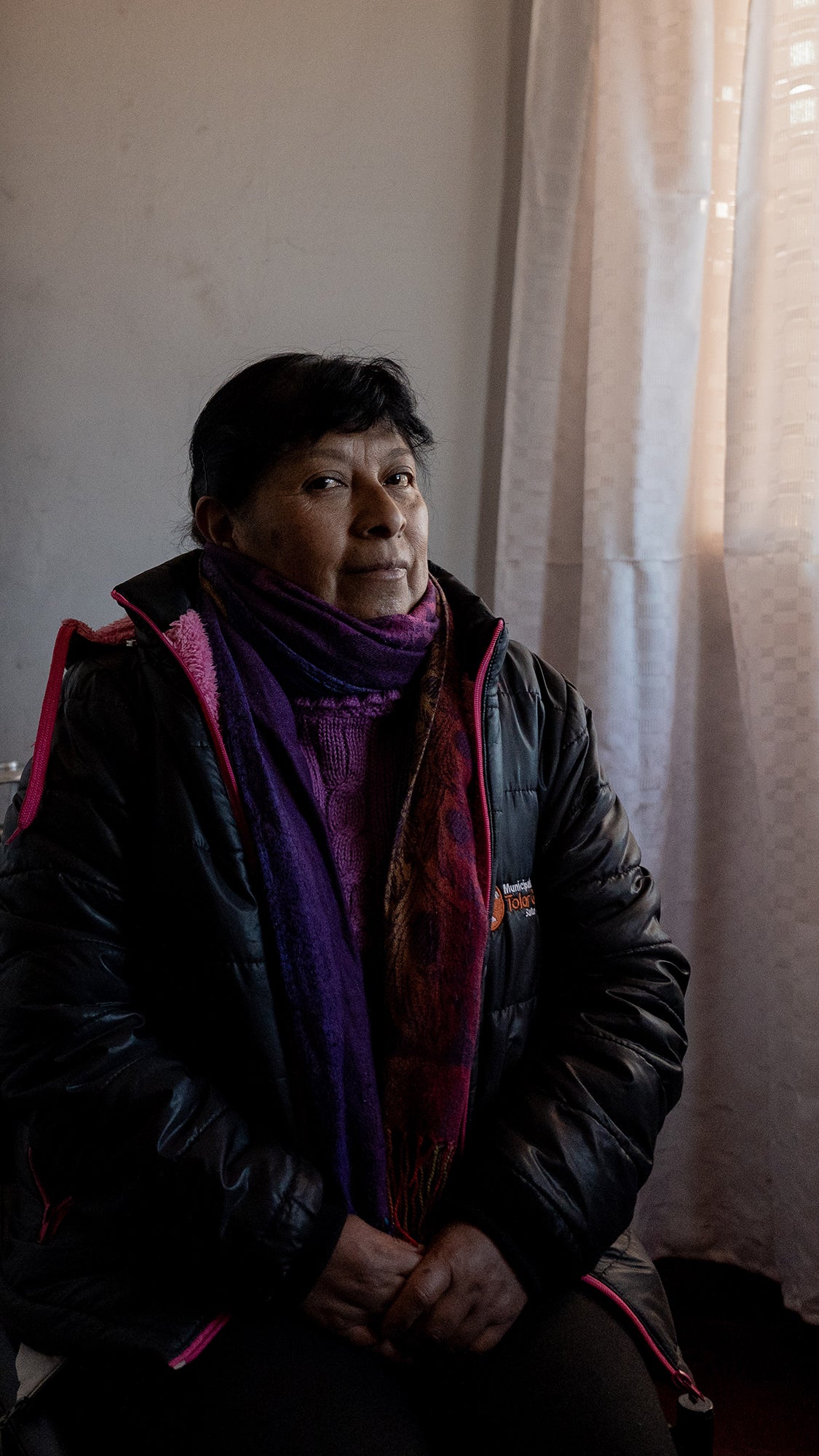
Marta Ríos in her office in Tolar Grande.
-
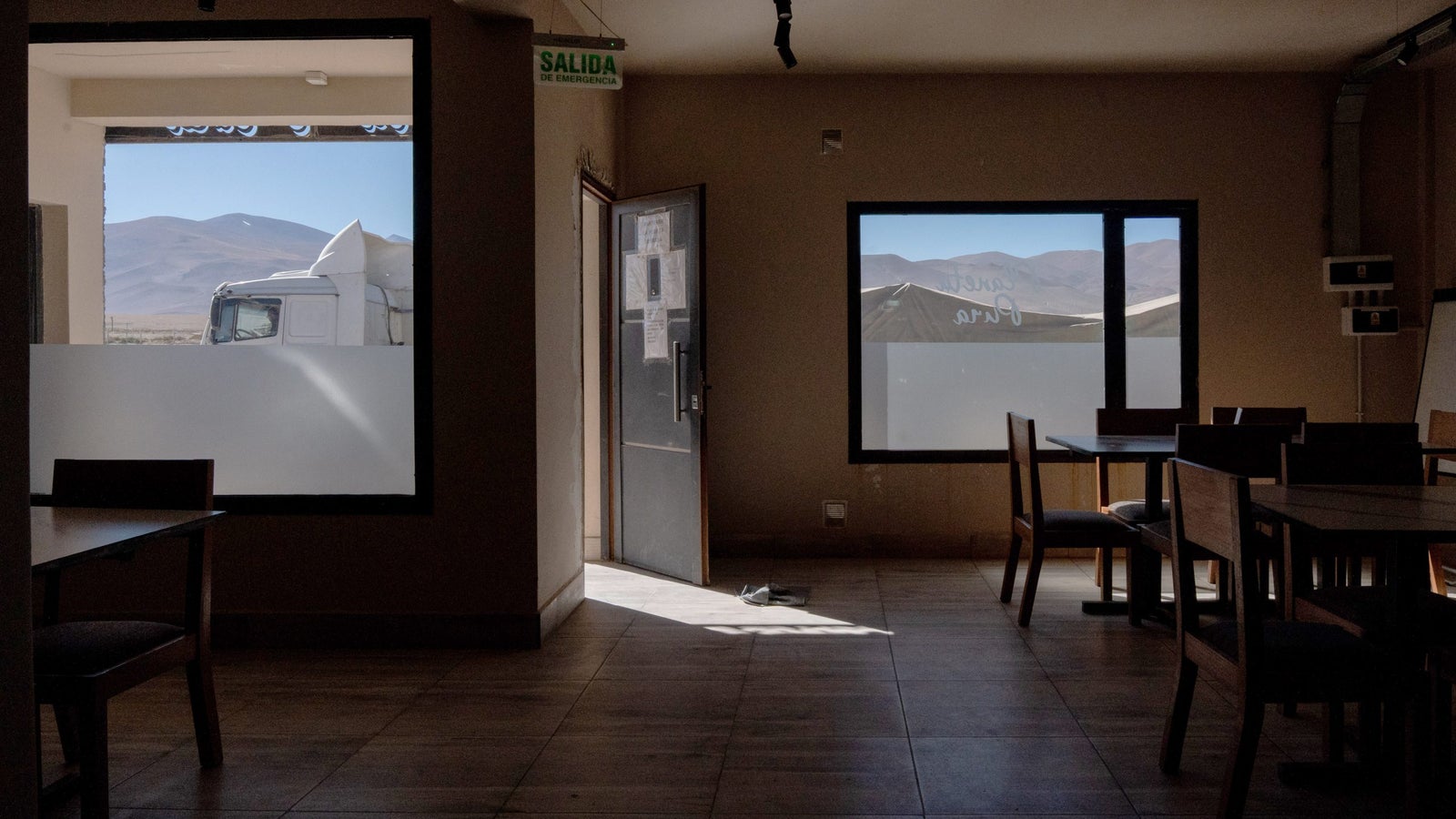
The Planeta Puna restaurant delivers food to mining companies in Pocitos, Argentina.
Anita Pouchard Serra for Rest of World
“You can feel the slowdown. We try to keep the dining room going mostly with locals,” Delgado told Rest of World. “Lithium projects hire many people for construction or drilling, with lots of contractors involved. But once the platforms are built and the wells drilled, the contractors leave — and the jobs disappear.”
Along with the jobs came occasional support for education and sports programs, and modest improvements in infrastructure in some of these towns — plaques crediting mining firms for small schools, sanitation works, and public squares are scattered across the region. In Pocitos, an Argentine hamlet near the Chilean border, a plaza bears the name of Arcadium Lithium among several other donors.
As major construction phases wound down, so did the perks.
“For a while, families benefited from mining jobs,” Julio Cruz, an Indigenous leader in Tolar Grande, told Rest of World. “But when drilling stopped, employment fell — we always knew these companies would only come for a season.”
It is not just the jobs that have disappeared. The towns also bear the scars of mining and related activities. Heavy truck traffic has damaged roads, while drilling operations have pierced the salt flats, leaving visible marks on landscapes that once drew tourists.
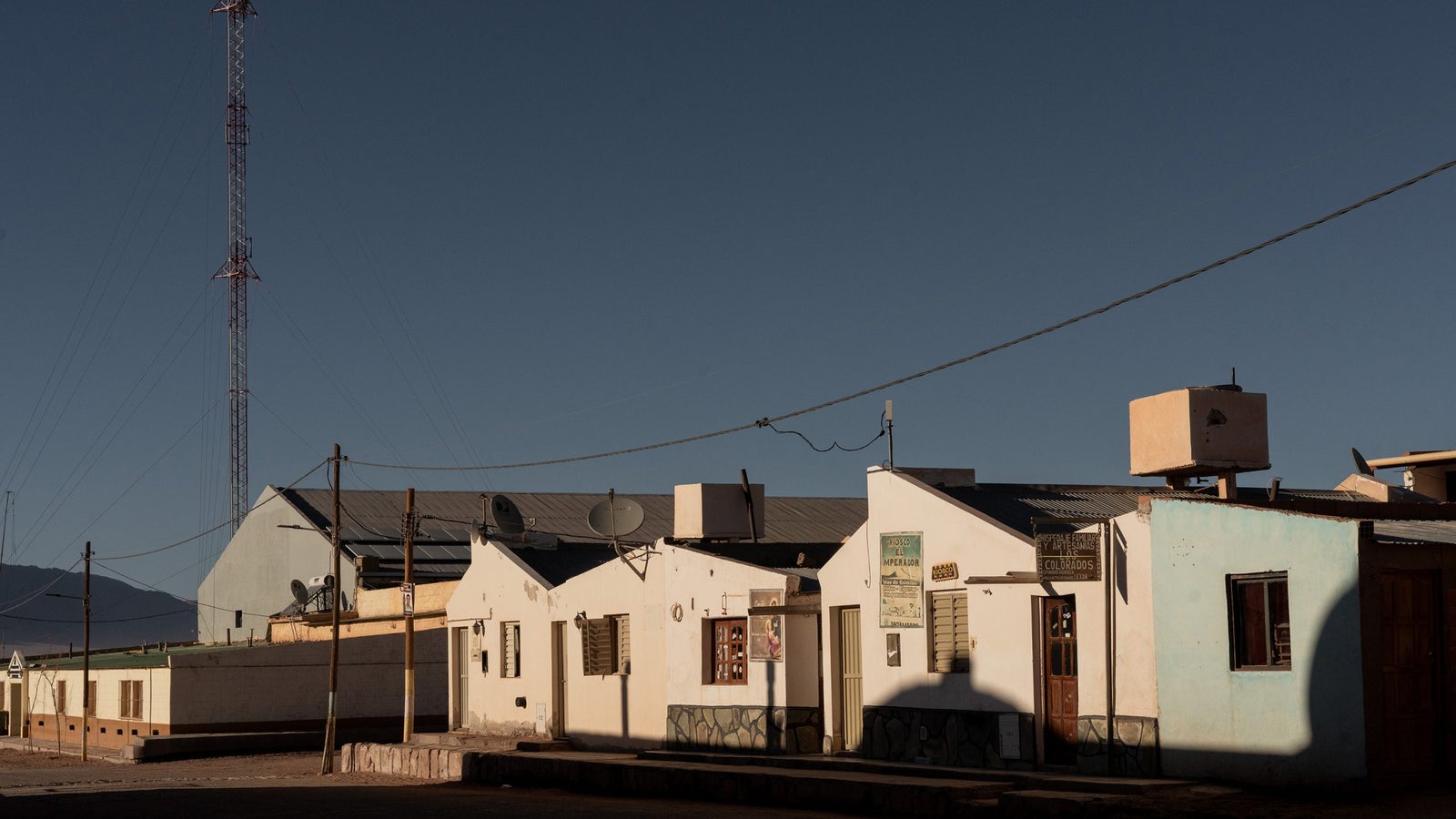
Shops and restaurants in Tolar Grande.
Anita Pouchard Serra for Rest of World
There are also environmental issues. While lithium brine extraction is less visibly destructive than copper or gold mining, it remains water-intensive. In 2024, a court in Argentina’s Catamarca province suspended new mining permits over concerns related to water. Companies now promote direct lithium extraction, a technology touted as less resource-intensive, though it remains unproven at scale.
Of the three countries, only Chile, the region’s longtime powerhouse, appears to have a backup plan: It is pitching “green lithium,” betting that sustainability and traceability can command a premium from carmakers. This strategy could yield a superior product in the global market while shielding local communities somewhat from the boom-and-bust swings of commodity prices, Pamela Goicovich, president of Chile’s International Lithium Chamber, told Rest of World.
Bolivia holds the world’s largest reserves but, hampered by difficult geology and state controls, has almost no production. Argentina, once billed as the next lithium giant, slipped from fourth to fifth place in global output in 2024, though the government estimates exports will reach $11.3 billion by 2032, from less than $700 million in 2024.
For people in the Andes, the question is less about future projections and more about their present reality. Businesses that focused on the mining industry are going back to their original intent. Tourism operators who once found it nearly impossible to book a room — because they would often be reserved for and by mining workers — say local guesthouses are now trying to lure visitors drawn to nearby salt flats and high-altitude landscapes by promising availability.
In Tolar Grande, where the salt flats and mountains are beginning to draw tourists again, residents are painfully aware that the landscape is not what it was before the mining companies swept in. The heavy traffic of mining trucks, for example, has left some dirt roads badly scarred.
“The community wants companies to help the town grow as much as they do,” said Ríos. “We want mining to leave something — at least paved roads. They have to leave something for everything they take.”
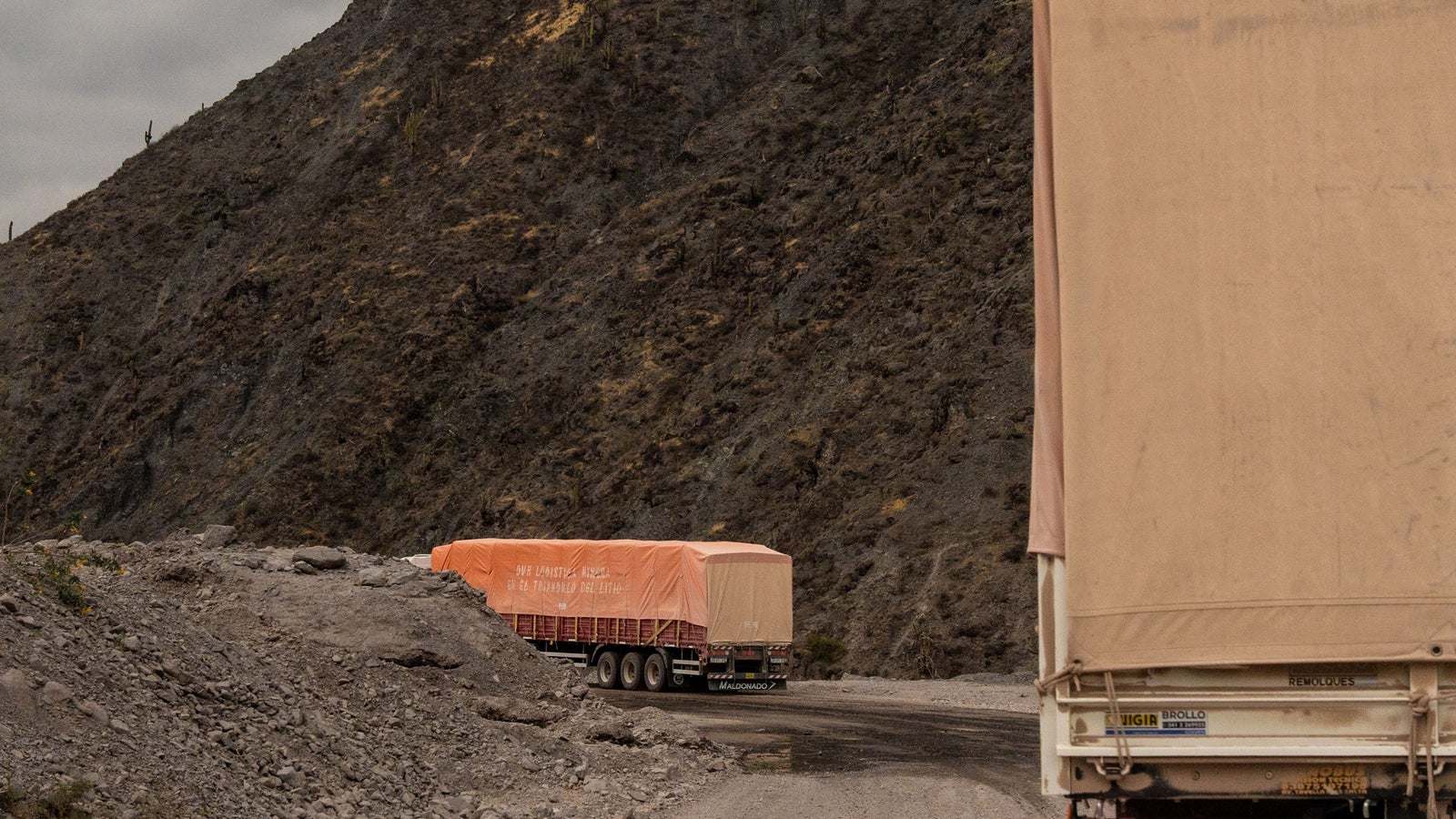
Trucks servicing lithium mining companies on the road to the capital city of Salta Province.
Anita Pouchard Serra for Rest of World
